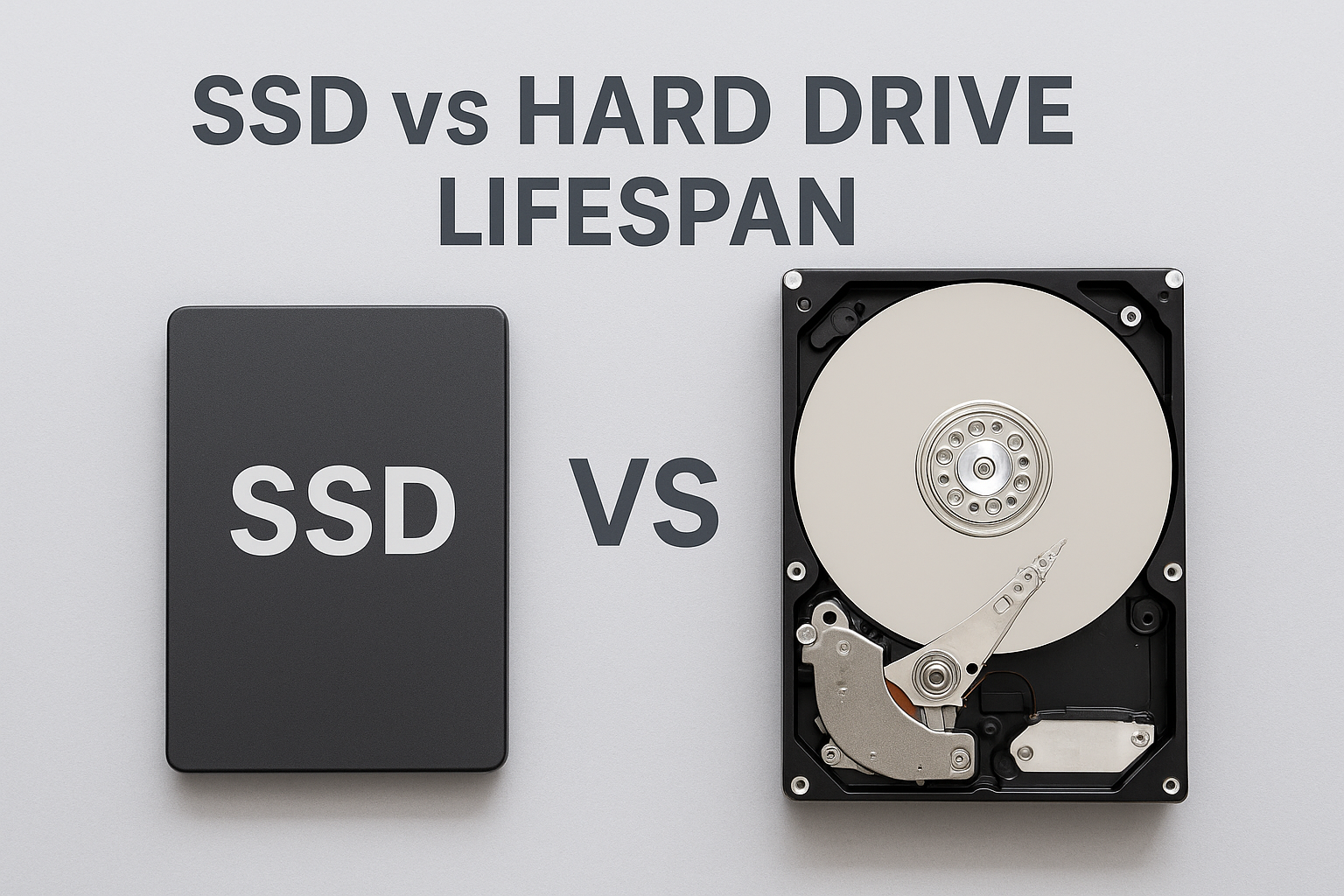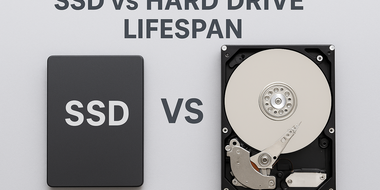SSD vs Hard Drive Lifespan: Which One Lasts Longer and What About Data Recovery?
When choosing between an SSD (Solid State Drive) and a traditional HDD (Hard Disk Drive), lifespan and reliability are two of the biggest concerns for users. Both storage devices have their strengths and weaknesses — but they also fail in very different ways. Understanding this difference is crucial, especially when it comes to data recovery from SSDs and hard drives.
⚡ SSD Lifespan Explained
SSDs store data on NAND flash memory cells, which have a limited number of write cycles. Modern SSDs often come with endurance ratings such as TBW (Terabytes Written) or DWPD (Drive Writes Per Day), which give an estimate of how long the drive can last under continuous usage.
-
Consumer SSDs usually last 5–7 years with normal workloads.
-
Enterprise SSDs with higher DWPD ratings can last longer under heavy write operations.
-
Once cells wear out, the SSD becomes read-only or fails suddenly, making SSD data recovery more challenging compared to HDD recovery.
At Micronics Data Recovery India, we frequently handle cases of NVMe SSD recovery, where drives fail without warning due to firmware corruption, controller failure, or sudden power loss.
💽 Hard Drive Lifespan Explained
Hard drives store data on spinning magnetic platters and use mechanical heads to read/write data. Their average lifespan is also 3–7 years, but the failure pattern is different:
-
Mechanical issues (head crash, spindle failure, motor damage) are common.
-
Hard drives often show warning signs before failure, such as unusual noises (clicking, grinding) or slow performance.
-
This makes data recovery from hard drives comparatively easier and more successful than SSD recovery, since data is physically written on platters.
At Micronics, our engineers perform cleanroom data recovery for hard drives, using specialized tools to repair or replace damaged components.
🔍 SSD vs HDD Lifespan Comparison
| Feature | SSD | HDD |
|---|---|---|
| Lifespan | 5–7 years (based on TBW/DWPD) | 3–7 years (depends on usage) |
| Failure Pattern | Sudden, without warning | Gradual, often with warning signs |
| Durability | No moving parts, shock-resistant | Mechanical, prone to damage |
| Data Recovery | Complex, firmware & chip-level | Higher success rate if platters intact |
🚨 Which Is Better for Data Recovery?
-
SSDs are faster and more durable, but once they fail, recovery is far more complex and requires advanced tools.
-
HDDs are more prone to physical damage, but in many cases, hard drive data recovery is more successful.
If your drive (SSD or HDD) has failed, avoid DIY tools or formatting attempts — these can make recovery harder. Instead, consult experts like Micronics Data Recovery India, who specialize in SSD recovery, NVMe SSD recovery, and hard drive data recovery services.
✅ Final Thoughts
Both SSDs and HDDs have similar average lifespans, but their failure modes differ. For critical data, always keep backups. If your drive fails, professional help is the safest option.
👉 Whether it’s data recovery SSD services or data recovery hard drive solutions, Micronics Data Recovery provides expert recovery with advanced tools and proven techniques.


